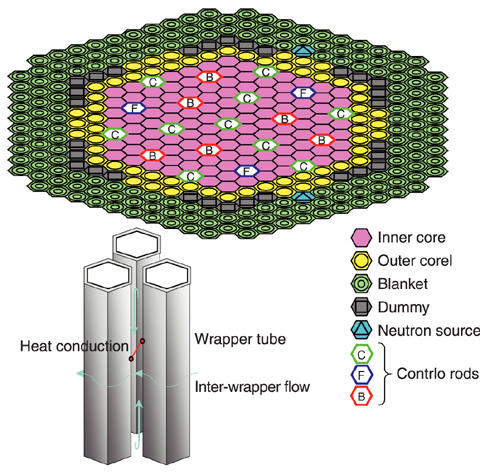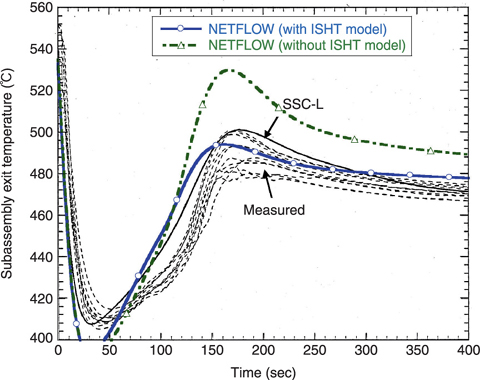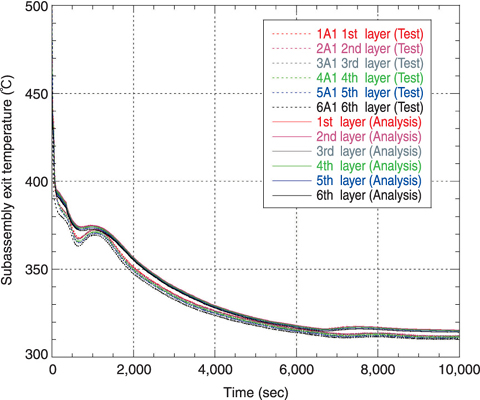
Fig.1-10 Core of MONJU and inter-subassembly heat transfer (ISHT) model

Fig.1-11 Comparison of "JOYO" assembly exit temperature (at 3rd layer)

Fig.1-12 Comparison of "MONJU" subassembly exit temperature during reactor trip from 45% thermal power
The NETFLOW code has been developed in order to simulate simply and accurately complex flow systems like heat transport systems (HTSs) and auxiliary cooling systems of a nuclear power plant. The calculation accuracy has been confirmed through analyses in light water reactor systems and test results of the forced circulation of the "MONJU" reactor. This code is already provided to graduate school students for their education.
In order to do accurate simulation under low flow rate conditions of the liquid metal cooled fast reactors, a model to calculate the heat transfer between subassemblies (SAs) was proposed and validated. In this model, six neighboring SAs' overall heat transfer coefficients for heat conduction by liquid metal and for low flow heat transfer around SAs, i.e. inter- wrapper flow, were applied (Fig.1-10). Generally, temperature at the center SA is higher than the peripheral SAs. It is realistic that SAs should be analyzed by radial layers from the center outward rather than one by one. Therefore, the model calculated temperatures from data matrices consisting of kinds (fuels, blankets, control rods, and reflectors) and numbers of SAs neighboring the SA in question. The results are shown in Fig.1-11 and Fig.1-12; exit SA temperatures are simulated, like the SSC-L code developed in USA. Since exit temperatures were calculated appropriately, the temperature behavior can be understood before a calculation with a 3D model is done. The present ISHT model can be applied to other one-dimensional plant dynamics codes.